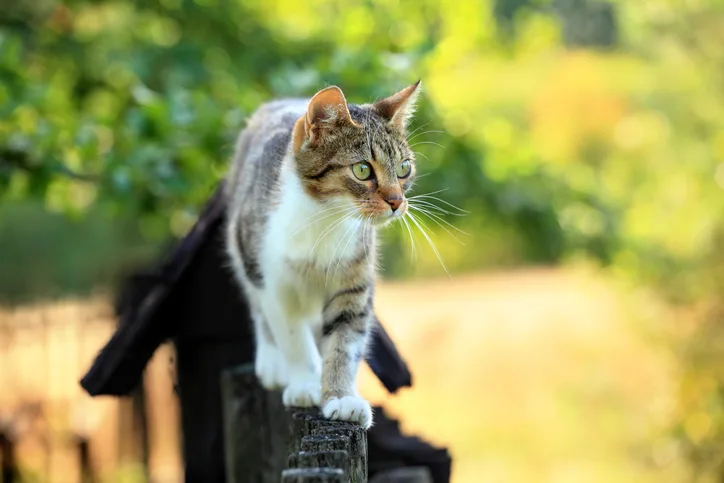
In the Literature
Ricardo T, Azócar-Aedo L, Signorini M, Previtali MA. Leptospiral infection in domestic cats: systematic review with meta-analysis. Prev Vet Med. 2023;212:105851. doi:10.1016/j.prevetmed.2023.105851
The Research …
Studies of leptospirosis in cats have increased and commonly investigate serologic titers or PCR of urine samples in stray or free-roaming cats with limited patient history. Cats may have an underrecognized role in the epidemiology of leptospirosis.1,2
Authors of this systematic literature review screened 5 databases for studies published between 1979 and 2022 to estimate the prevalence of leptospiral infection in cats and identify risk factors for infection. Sixty-one studies that assessed seroprevalence of leptospiral antibodies and/or prevalence of pathogenic Leptospira spp in the urine or kidneys were included in one or more analyses.
Based on 55 studies (7,413 cats), global seroprevalence was 11.7%; however, geographic representation was not balanced, with fewer studies from North America compared with Asia, Europe, and South America (14.8% of studies were conducted in Brazil). Pooled estimation of prevalence of pathogenic Leptospira spp (typically assessed via PCR) was 3.7% in urine based on 15 studies (2,597 cats) and 12.8% in kidney tissue based on 8 studies (528 cats) with mostly shelter or stray cats.
Meta-analysis of risk factors was limited, as many studies did not include these data. Assessed factors included sex, stray versus owned status, contact with rodents, access to outdoors, age category, environment (eg, rural versus urban), and contact with other cats. Only cats with access to outdoors had significantly increased (2.74 times greater) odds of infection. Free-roaming status likely indicated increased exposure to infected water or infected prey.
Although study data were pooled for summary measures, there was variability in study design and significant statistical heterogeneity. In addition, studies measuring titers often did not examine for organisms, and studies assessing PCR results often did not assess titers or verify PCR-positive results with other molecular methods.
Correlation of these findings to cats in the United States may not be appropriate, as other US-based prevalence reports are much lower.3
Physiology of Micturition
Storage Phase
During the normal storage phase, stretch receptors in the bladder wall send afferent signals along the pelvic nerve, which activate a reflex arc through the hypogastric nerve to the urethra. Norepinephrine is released by postganglionic neurons to activate β-adrenergic receptors in the bladder wall, allowing for relaxation and continued filling. Norepinephrine also stimulates α1-adrenergic receptors in the urethra and causes contraction of the circular and longitudinal smooth muscle surrounding the urethra, thus preventing urine leakage.
In addition to smooth muscle tone, the somatic-mediated contraction of the striated muscle surrounding the urethra is also important for maintenance of continence. With sudden increases in abdominal pressure, afferent signals travel up the pelvic nerve and initiate efferent signals down the pudendal nerve, releasing acetylcholine and activating nicotinic cholinergic receptors, thus causing contraction of the striated muscle.
Voiding Phase
During initiation of voiding, stretch receptors send afferent signals along the pelvic nerve and cranial to the pontine micturition center. Signals from the cerebral cortex and the hypothalamus are processed to determine if the situation is appropriate for initiation of micturition; if so, signals are sent down the pelvic nerve, leading to release of acetylcholine at the postganglionic parasympathetic neurons. Acetylcholine binds to receptors and stimulates bladder smooth muscle contraction. At the same time, inhibitory signals are sent to the sympathetic reflexes, and the urethra relaxes, allowing for normal emptying.
… The Takeaways
Key pearls to put into practice:
Cats, particularly free-roaming or stray cats, may have serologic evidence of exposure to Leptospira spp.
Positive microscopic agglutination test (ie, MAT) titers may be present in some cats but are generally low (<1:400) and unlikely to cause a positive result on point-of-care antibody assays. Specific serovars of concern for feline infection have not been adequately researched.
Clinical signs of leptospiral infection and potential comorbidities were not described in this study and remain poorly defined.
Public health precautions should be taken when handling patient urine, as leptospirosis is a zoonotic disease.
You are reading 2-Minute Takeaways, a research summary resource presented by Clinician’s Brief. Clinician’s Brief does not conduct primary research.